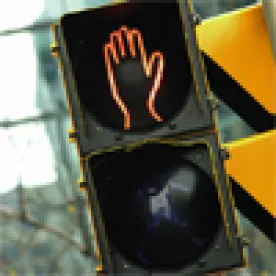Red light cameras have become a hot topic in many states. Some people view them as a safety measure, whereas others view them as only a moneymaker for municipalities. Even still, others view them as unwanted governmental intrusion into citizens’ private lives. As a result of the criticisms raised over the cameras, some states have opted to turn them off.
As some states have started to turn off the cameras, new research from the Insurance Institute for Highway Safety indicates that turning off red light traffic signal cameras actually costs lives. The Institute’s research shows that red light programs in 79 large U.S. cities saved nearly 1,300 lives through 2014.
Their research indicates that after shutting down the red light cameras, the rate of fatal red-light running crashes increased up to 30%. Additionally, there were 16% more fatal crashes of all types at signalized intersections than would have occurred if the cameras were in place and turned on. That 16% correlates to an estimated 63 deaths that would have been prevented in the cities if the red light cameras had not been turned off.
Car crashes as a result of running red lights caused 709 deaths in 2014, and an estimated 126,000 injuries. The research shows that most of those killed in accidents from red lights are not the drivers running the red lights, but instead are occupants of other vehicles, passengers, pedestrians, or bicyclists.
The Institute has stated that automated enforcement through the use of red-light cameras deters drivers from running red lights. The Institute maintains that while traditional police can help alleviate the problem, there are not enough resources to position police at every intersection.
For this reason, the Institute argues that cameras increase the chance that violators running red lights will be caught, and that well-published camera programs discourage would-be violators from taking the risk of running a red light and being caught doing it. The total number of communities with red light cameras declined to 467 in 2015 from a high of 533 in 2012.
According to a recent forum held at the Institute’s Vehicle Research Center, the red light camera programs should be viewed as a safety tool, not as a revenue generator. Some speakers at the forum suggested keeping red light camera revenues separate from a community’s general fund and decide the red light revenues to traffic safety.
A study by the Institute from 2011 found that in large cities with red light cameras during the years of 2004-2008, there were significant decreases in the per capita rate of fatal crashes from running red lights and fatal crashes of all types at intersections with traffic signals.
Meanwhile, the newer study by the Insurance Institute for Highway Safety looked at the effect of ending the camera programs, which is something that was not previously studied.



 />i
/>i

